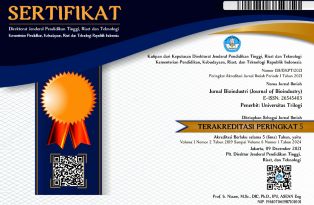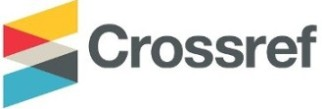RESPONSE OF IMAGO Spodoptera exigua HUBNER ATTRACTION TO TWO TYPES OF TRAPS ON ONION PLANTS
Abstract
One solution to solve pest problems in shallot cultivation is to apply the concept of Integrated Pest Management (IPM). An example of IPM that can be used is the use of light traps and sex pheromone traps, where both traps have been proven to be able to control the population of S. exigua Hubner in shallot plants. This study used RAK (Randomized Group Design) with 1 factor, namely the type of trap. The observation variables observed were the number of trapped imago, the number of egg clusters, the intensity of the attack, and production yield. Based on the results showed that S. exigua Hubner imago was more trapped in the lamp trap which amounted to 197.67 heads than the sex pheromone trap which only amounted to 14.01 heads. The number of egg groups in the sex pheromone trap plot was 0.28 and in the light trap plot was 0.18. The larval population in the sex pheromone trap plot was higher at 3.58 individuals than in the lamp trap plot at 3.16 individuals. The intensity of S. exigua infestation in the light trap plots was lower at 126.66 while in the sex pheromone trap plots, it was 155. The use of light traps to control the S. exigua population also provides higher production and profit than using sex pheromone traps.
Keywords
light traps, sex pheromone traps, Spodoptera exigua Hubner
Full Text:
PDFDOI: https://doi.org/10.31326/jbio.v6i2.1686
Refbacks
- There are currently no refbacks.
Editorial Office:
Fakultas Bioindustri
Universitas Trilogi
Jl. TMP Kalibata No.1
Jakarta 12760
Copyright Notice:


2.png)






2.png)







